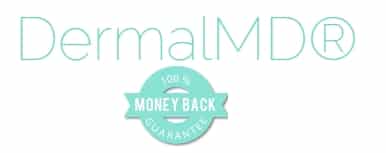 DermalMD May 6, 2018 0 Comments Posted in: Uncategorized
DermalMD May 6, 2018 0 Comments Posted in: Uncategorized
It is estimated that a quarter of adults suffer from varicose or spider veins. The most common causes of varicose veins is pregnancy, age, pressure on your legs from standing too long, menopause, and obesity. Varicose veins also run in the family so there’s a chance you are already predisposed to them. This venous disorder happens when blood collects in the veins instead of flowing to your heart. This all happens when you have a weakened valve that is not working properly.
Varicose or Spider Veins are most commonly found on the legs and your feet due to the pressure of standing and being on our feet most of the time. But don’t be fooled, they can happen anywhere in the body, even your face.
What makes Varicose Veins so distinct?
Typically our veins have a bluish or greenish appearance under our skin. With varicose veins what you get is an array of veins that are dark blue, purplish, or red in color. What makes them stand out is not only their color but the fact that they appear to pop out because underneath your skin, those veins are twisted, larger than normal, and swollen. It is filled with old blood cells and most of the time they protrude so much that you would think they are never going to go away.
Sclerotherapy, Lasers, Radio Frequency, and Pain
Quite often the appearance of these veins are so unsightly and have gotten out of hand to the point of resorting to “minimally invasive” treatments. But don’t be fooled, to some degree or another they bring their share of pain and discomfort. Some of the most common ways to treat varicose veins comes in the form of invasive methods. Even those that do not claim to be invasive can still leave you feeling some degree of pain. These types of treatment method include radio frequency, laser treatment, and sclerotherapy. Radio frequency therapy involves the emission of radio frequency or laser energy through a catheter in order to shrink and seal the vein. Radio frequency therapy is typically used for larger veins that are swollen and protruding. Laser treatment works similarly except rather than going into the vein, the laser is placed on the surface of your skin. It emits a specific wavelength of light that heats up and damages the vein without damage to nearby tissues. With sclerotherapy or injection therapy a physician injects a chemical irritant into the vein, making it swell, stick together, and then seal shut. My question is who would want to inject such chemicals into their bodies when they can try basic self-care and non-invasive safe treatment methods in their own home?
A Little Self-Care Goes a Long Way
There are many things you can do to prevent varicose veins and avoid painful treatment methods. First of all keep a healthy balance of sitting and standing. You don’t want to be a couch potato, but at the same time you don’t want your legs and feet to be under constant pressure from standing all the time. If your job or lifestyle requires you to be on your feet a lot then find a great pair of compression socks. These will help improve your circulation and offer relief, and of course at the end of the day don’t forget to kick up your feet. Change up your physical activity to help keep your blood circulating. You can also help your blood circulation by avoiding tight-fitting clothes all the time and heels. Another great thing to invest in is DermalMD’s Varicose Vein Treatment Serum.
Incorporate DermalMD to Your Daily Self-Care Regimen
DermalMD Varicose Vein Treatment Serum is a non-invasive approach to treating varicose veins. This serum works beneath the surface to improve cell health and blood circulation. Additionally, you are not injecting your self with any irritants or causing additional pain to your body. It a simple and non-invasive treatment method and great to implement to your daily routine. You can learn more about the many benefits of DermalMD’s efforts to helping your treat those unsightly varicose and spider veins by clicking here.

